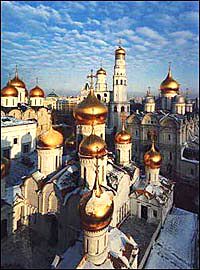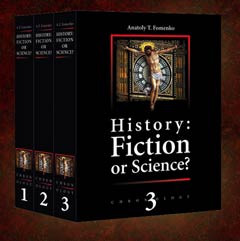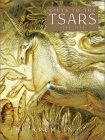The name oprichnina disappeared seven years after its adoption, and the expanding territory under the new administration took on the name of ''court land'' or "domain land''. It became a state within the state, complete with its own regularly constituted organization and functioning under time- honored administrative forms, but under completely new, unquestionably loyal officials, who owed their position, their land, and their very lives to the service they rendered the tsar.
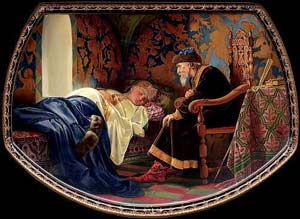 Here in his "domain" where the tsar ruled without let or hindrance, Ivan executed or tonsured or banished most of the old hereditary landowners and confiscated their estates. He transplanted thousands of leading families from one district to another in an obvious effort to destroy their influence, for he saw their power as a threat to good government and even to national survival. A few old boyar families voluntarily surrendered their lands and sought service in the new order, but in each case they received in exchange for their ancestral holdings distant new estates which they retained only under service tenure. The new landowner-vassal relationship made the gentry in the domain land completely subservient to the tsar.
Here in his "domain" where the tsar ruled without let or hindrance, Ivan executed or tonsured or banished most of the old hereditary landowners and confiscated their estates. He transplanted thousands of leading families from one district to another in an obvious effort to destroy their influence, for he saw their power as a threat to good government and even to national survival. A few old boyar families voluntarily surrendered their lands and sought service in the new order, but in each case they received in exchange for their ancestral holdings distant new estates which they retained only under service tenure. The new landowner-vassal relationship made the gentry in the domain land completely subservient to the tsar.
The overall picture of Russia was one of hopeless confusion. The oprichnina or domain affected only certain localities, some of them sprinkled about over the land and surrounded by the old boyaral estates which made up the zemshchina. Two of Novgorod's five districts were domain or court land, the other three part of the zemshchina; some of the streets of Moscow were in the oprichnina, the rest outside. In general, the boyaral estates on the Lithuanian frontier and those lying to the east and south near Tatar territory remained outside the new domain administration. Such territories, however, suffered their own confusion and turmoil from the war with Lithuania and the annual Tartar raids.
The consequences of the oprichnina were revolutionary. Although Ivan did not destroy the aristocratic element in Russia-- enough of it, survived to launch a civil war after his death-- he so weakened and altered it that the aristocracy was never again the same' In dispossessing tee old boyars who had held their land by hereditary right, even when he merely transplanted them to some distant new estate which they held by service tenure, he uprooted them, destroyed their old connections, deprived them of their old adherents, and took away their local position of respect which generations on the old estates had brought their families. No longer was there any material or social basis for the haughty independence they had once known. From that time forward they were ''service gentry'' whose position and well-being depended upon their service to the state. But Ivan left the task half finished to Peter the Great a century later.
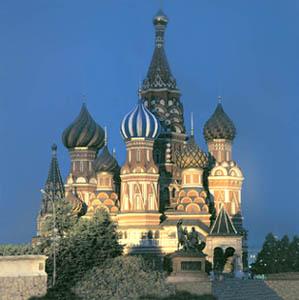 The old hereditary boyars were not the only ones to experience the rooting out of old ties. When the new pomestchiks took over the estates confiscated from some defiant old landowner, they received with it the peasants who had worked the fields for centuries. Whatever rights the peasants had maintained under their old masters melted away under the new, for the government tightened the curbs upon the peasant's right to move in order to bind him firmly in the service of the pomestchik, who required maintenance and support if he in turn were to render his service obligation to the state. The system that the oprichnina created was a two-storied house of service, or in fact slavery, with the pomestchiks occupying the upper story and the peasants, rapidly becoming serfs, occupying the lower.
The old hereditary boyars were not the only ones to experience the rooting out of old ties. When the new pomestchiks took over the estates confiscated from some defiant old landowner, they received with it the peasants who had worked the fields for centuries. Whatever rights the peasants had maintained under their old masters melted away under the new, for the government tightened the curbs upon the peasant's right to move in order to bind him firmly in the service of the pomestchik, who required maintenance and support if he in turn were to render his service obligation to the state. The system that the oprichnina created was a two-storied house of service, or in fact slavery, with the pomestchiks occupying the upper story and the peasants, rapidly becoming serfs, occupying the lower.


|
